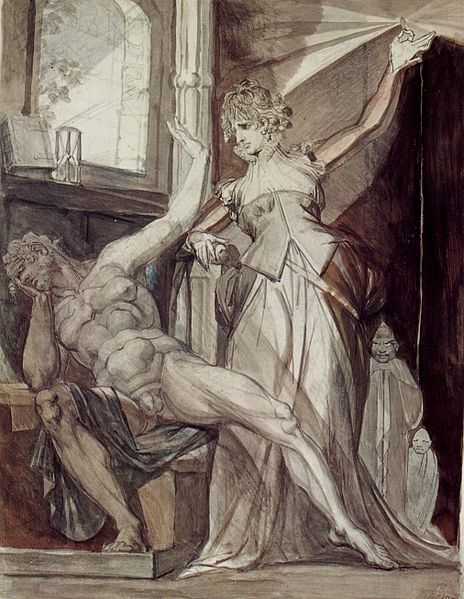Gudrun or Kriemhild is the wife of Sigurd/Siegfried and a major figure in Germanic heroic legend and literature. She is believed to have her origins in Ildico, last wife of Attila the Hun, and two queens of the Merovingian dynasty, Brunhilda of Austrasia and Fredegund.
Kriemhild discovers Siegfried's corpse. Painting by Johann Heinrich Füssli, 1817.
Kriemhild accuses Hagen of murdering Siegfried. Painting by Emil Lauffer, 1879
Kriemhild and Gunther, Johann Heinrich Füssli, 1807
Kriemhild's Death, Karl Schmoll von Eisenwerth, 1911
Sigurd or Siegfried is a legendary hero of Germanic heroic legend, who killed a dragon—known in some Old Norse sources as Fáfnir—and who was later murdered. In both the Norse and continental Germanic tradition, Sigurd is portrayed as dying as the result of a quarrel between his wife (Gudrun/Kriemhild) and another woman, Brunhild, whom he has tricked into marrying the Burgundian king Gunnar/Gunther. His slaying of a dragon and possession of the hoard of the Nibelungen is also common to both traditions. In other respects, however, the two traditions appear to diverge. The most important works to feature Sigurd are the Nibelungenlied, the Völsunga saga, and the Poetic Edda. He also appears in numerous other works from both Germany and Scandinavia, including a series of medieval and early modern Scandinavian ballads.
The death of Siegfried. Hagen stands to the right of Siegfried with a bow. From the Hundeshagenscher Kodex.
"Sigurd proofs the sword Gram" (1901) by Johannes Gehrts.
Siegfried's Departure from Kriemhild, by Julius Schnorr von Carolsfeld, c. 1843
Relief "Siegfried in Xanten" on the Nordwall in Xanten.








